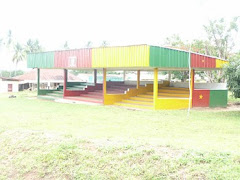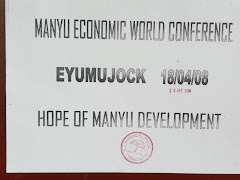
A stretch of the Mamfe-Ekok Road. Digging out to arrive the conference:
One of the most important and crucial facility in a country’s infrastructure is roads. Good roads can play a vital role in determining whether a community becomes equalitarian homogenous or further slips in poverty due to lack of social and economic development. Challenging road conditions further hamper productivity, especially lower trade and economic activity with neighboring communities.
Following the basic concepts of road building, a well constructed and maintained asphalt road should last 20 years without major repairs and reconstructions. The road has to be designed for the highest anticipated load; this implies that a road designed only for cars will not stand trucks. One truck with about 9 tons on a single rear axle does as much damage to a road as nearly as 10,000 cars.
The challenging road conditions in Manyu are therefore attributed to poor design and lack of
maintenance. Without overemphasizing the importance of good drainage due to the heavy rains in Manyu, engineers estimate that at least 90% of a road’s problem can be related to excess water or to poor water drainage. Too much water in any layer of a road’s structure can weaken the layer, leading to failure. In the surface layer, water causes cracks and potholes. In the lower layers, it undermines support. The common argument has always been that our roads are bad because they are not paved. Indeed, it is not necessary to a pave all roads immediately. There is absolutely nothing wrong with a well built and well maintained road if traffic loads and volume do not require a paved surface. Three hundred vehicles per day is the recommended minimum to justify paving most roads.
In light of the challenging road conditions in Manyu, especially Kumba – Mamfe and Mamfe-Ekok, the emphasis should be on maintenance.
This means cleaning of ditches regularly, taking care of culverts and bridges, retaining walls and potholes. Finally, keeping good records by knowing the roads construction, life and repair history. Records will help evaluate the effectiveness of the repair methods and materials used in maintaining a road over time. Without maintenance a road rapidly deteriorates and fail. Every year the government allocates funds for the the maintenance of roads but no one seems to know where the funds end up. As soon as the dry season passes by and the heavy rains approach during the raining season, the Manyu man is awaken by another nightmare where a journey of 10 KM can take 10 hours. The reason for this nightmare is because we have failed in one way or the other to monitor and take to tasks those awarded huge contracts for our road maintenance. The 2008 Eyumojock conference finally came up with a solution proposed by Dr. David Tambe. With the right strategy, maybe 2010 may be the dawn of new era with our challenging roads.
Read MEDWC final proceedings – Eyumojock 2008 at
http://www.medwc.org/.







































